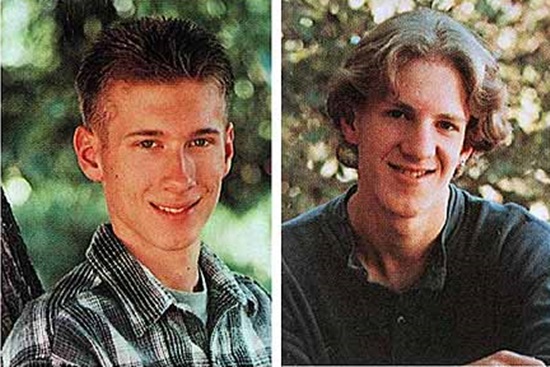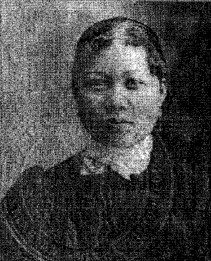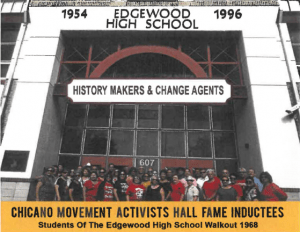Winner of the Spring 2018 StMU History Media Award for
Best Article in the Category of “United States History”
Best Descriptive Article
It was April 20, 1999 in Littleton Colorado. Seventeen-year-old Eric Harris and his eighteen-year-old friend Dylan Klebold both drove separately on a Tuesday morning to play a couple of frames of bowling before heading off to school. Before departing in their black trench coats, the teens stuffed their backpacks and two duffle bags into the trunk of their cars. When they arrived at their school campus later that morning, the two adolescents proceeded into the school, carrying the duffel bags, which contained two propane bombs.1 They kept the bombs inside the duffel bags and carried them into the cafeteria, setting up the bombs throughout the room, where they were rigged to detonate at precisely 11:17 AM. After setting up the bombs, Eric and Dylan then proceeded back to the school parking lot, where they waited for the bombs to explode. The boys had grave intentions on that day. Their intentions were to shoot up their high school, resulting in the most destructive school shooting to ever occur in the United States at the time. Their high school is known as Columbine, the most famous high school in America, for the wrong reasons.2

In January 1998, about a year before this horrific event unfolded, best friends Eric Harris and Dylan Klebold were suddenly surrounded by an aggressive and terrifying group of football players in the school cafeteria. The players proceeded to squirt ketchup packets at the two friends. Unable to fight back against the dominant jocks, Eric and Dylan were forced to wear their ketchup-stained clothes all day until they were able to go home from school. Around the cafeteria at Columbine, there were different classes of tables: the athletes had their table, and the weaker, outcast students had their table as well. While walking over to their table to sit at lunch, the athletes often threw skittles at Eric and Dylan and their outcast friends. While sitting at a lunch table with their few friends, the jocks kicked Eric and Dylan’s chairs, knocked their food trays down, and lunged food at them in the cafeteria. Bullying was not only a common occurrence to Eric and Dylan, but it also occurred to other students as well. Weaker students were shoved into lockers, called vile names, and also body slammed. They were the targets of the predators of the school. Everyone in the school, including Eric and Dylan, were afraid of the intimidating jocks, and for good reason. They were members of the trench coat mafia, which was a group that the two teens belonged to, which consisted of pro-Nazi outcasts, such as Eric and Dylan, and who also held a strong hatred for Christians. Their other trench coat mafia friends were able to shrug off the constant bullying. However, the same cannot be said about Eric and Dylan. The two friends took it in and absorbed it all, and their anger grew.3
As a result of the relentless harassment throughout Columbine, before going on a school-wide mass shooting spree, Eric Harris decided to dose on cough syrup, which he said, “is the best thing after a hard day of being called ‘gay’ by a schoolyard full of fashionable jocks and cheerleaders.”4 The two boys were outcasts of their school and members of this trench coat mafia subculture. At lunch for weeks, Eric and Dylan fantasized about blowing up the school, but because being harassed at Columbine was so common for outcast students, it was not unusual for students to speak of such outlandish events. So, when Eric and Dylan said this, other students did not believe they were serious; however, the intentions of the two teens were indeed grim and were not to be underestimated.5
The constant hatred towards his peers caused Eric to devise the plan of the shooting of his high school. Eric did most of the planning, while Dylan followed his lead and did what he said. Eric went into the cafeteria and observed when it was the most populated. He discovered that there were around 488 people inside the cafeteria at 11:17 a.m. Since this was the most populated time, they planned to bring two black duffel bags, each containing a propane tank that they would rig to explode at 11:17 a.m. In addition, they bought weapons, made bombs, and hid them in their trench coats and in the trunks of their cars. They carefully planned the terrible act for over a year prior to the shooting.6
After months and months of constant planning, Eric and Dylan were ready to put their diabolical plan into action. On April 20, 1999, around 11:20 AM, after placing the bombs in the cafeteria, Eric and Dylan were most likely bored of waiting in the parking lot for the bombs to explode. After the bombs failed to detonate around that time, the two adolescents began the destruction of their high school. They unzipped their trench coats, pulled out their guns, and opened fire in the parking lot of Columbine.7

Outside of the school building on campus, seventeen-year-old Rachel Scott was eating lunch with her friend Richard Castaldo. Eric and Dylan came up to Rachel and Richard. The two shooters shot Richard multiple times in almost every part of his body, including his lungs. Then, they shot Rachel several times, hitting her thigh, left arm, and chest. They then turned their guns towards other fleeing students, shooting them as well. Rachel Scott laid on the ground, crying. Rachel, like many other victims of the shooting, was a Christian, which was the religion that the two pro-Nazi shooters despised. Eric went up to the poor and helpless Christian, and asked, “Do you believe in God?” Rachel said yes, and in response Eric said, “Then go be with Him,” and he shot her once again killing her.8 Rachel Scott died a martyr on that horrific day for her faith. Eric and Dylan resumed their carnage by entering into the school building itself. They went into the cafeteria, where most of the students had evacuated. While searching for students, the shooters began throwing bombs. Eric and Dylan then headed upstairs in the building. Coach Dave Sanders decided to stay back in the school to aid students, when Eric and Dylan ran into him. They shot Sanders in the back while he was fleeing, killing him instantly. After combing through the cafeteria, the shooters entered the library of Columbine, the deadliest room of the shooting. They began the bloodshed in the library by shooting behind the librarian’s desk. While in the commons, Eric and Dylan were taunting the students, yelling at them and cursing. They shouted at the horrified teens yelling, “All the jocks stand up!” They also targeted students who were wearing sports apparel. Isaiah Shoels was in the library on that nightmarish day. Isaiah was a football player at the school, which was not a good position to be in on April 20, 1999 at Columbine. Due to his African-American race, Eric and Dylan yelled racial slurs at Isaiah, and then they shot him. Unfortunately, there was more blood to be spilled. Eric then made his way towards Cassie Bernall, another Christian at Columbine, and asked her, “Do you believe in God”? Once again, just like Rachel Scott, Cassie firmly responded “yes,” and then they killed her. Just like Rachel Scott, Cassie Bernall became a martyr at the hands of Eric Harris while professing her faith. They did the same Christian interrogation to Val Schnurr, who admitted her faith and was killed for it. The outraged gunmen exited the commons, leaving ten students in the library shot in cold blood, and many others injured.9

While roaming the school, the campus was being surrounded by police, ambulances, and even the National Guard. They knew they were not leaving that building alive. After deciding that there was nowhere else to run, Eric Harris and Dylan Klebold returned to the library, where they shot themselves in the head, putting an end to the bloody massacre of Columbine High School.10
The suicide of Eric Harris and Dylan Klebold may have seemed like a definite conclusion to the horrific shooting for some; however, for others, it was only just the beginning. Many families of those slaughtered victims at Columbine could not even begin to comprehend the weight of the situation. Many parents, whose sons or daughters became victims of the shooting, feared for their own marriages, let alone their mental status. One mother of one of the injured victims of the shooting committed suicide years later, due to her daughter being paralyzed and forced into a wheelchair for the rest of her life.11 However, despite the catastrophes of the families, to Eric and Dylan, this was a major success. They planned everything from entering the building, all the way to their own deaths. Eric Harris and Dylan Klebold were constantly harassed both physically and verbally to the point where they could no longer absorb any more humiliation and mistreatment from their peers. The constant bullying that the adolescents endured resulted in them dealing with severe depression disorders that few people were aware of. Even Dylan’s own parents were unaware of his suicidal behavior and of his ongoing depression at Columbine. Several arguments can be made about the cause of Columbine and what was truly going on inside the teens’ heads. Many claim the cause of the shooting was bullying, while others claim the shooting to be caused by the influence of violent video games, like “Doom,” and goth music artists, like Marilyn Manson. Whatever the true intentions of Eric and Dylan were, we will never seem to understand entirely. However, one point can be made about the disastrous shooting of Columbine on that horrid day. Eric Harris and Dylan Klebold had a specific goal: to exact revenge on the students of Columbine High School.
- UXL Encyclopedia of U.S. History, 2009, s.v. “Columbine High School Shooting,” by Sonia Benson. ↵
- American Decades, 2004, s.v. “Analysis: What the Two Young Colorado Gunmen Were Really Like,” by Cynthia Rose. ↵
- Perspectives on Modern World History, 2012, s.v. “Columbine High School Had a Serious Bullying Problem,” by Ralph W. Larkin. ↵
- Perspectives on Modern World History, 2012, s.v. “Columbine High School Had a Serious Bullying Problem,” by Ralph W. Larkin. ↵
- Ralph W. Larkin, Comprehending Columbine (Philadelphia: Temple University Press, 2007), 131. ↵
- Ralph W. Larkin, Comprehending Columbine (Philadelphia: Temple University Press, 2007), 131. ↵
- Wendy Murray Zoba, “Do you Believe in God?” Christianity Today, October 1999. ↵
- Life Focus, “Rachel Scott Life Focus Documentary”, 12:45-13:24, February 15 2016, https://www.youtube.com/watch?v=7M6MSM9o5Y4. ↵
- Wendy Murray Zoba, “Do you Believe in God?” Christianity Today, October 1999. ↵
- Wendy Murray Zoba, “Do you Believe in God?” Christianity Today, October 1999. ↵
- US News and World Report, “Columbine Shooting: 10 Years Later,” 0:00-3:39, April 19, 2009, https://www.youtube.com/watch?v=5XTIOs4YK_c. ↵



239 comments
Maria Martinez
Reading this article was honestly so saddening, it is a wild thought to think that what was explained in this article took place in America. While the blame is completely on the two shooters of this horrific day, it is important that people take action to really teach children the importance of being kind to those around them. The fact that bullying leads to not just school shootings, but suicide and many other unimaginable things goes to show that there should be a much bigger change in the education systems approach to bullying. I pray that the families of the victims find peace.
Leeza Cordova
I liked how this article was written and how it was a step-by-step article, instead of a merely descriptive article that does not go into detail. I also enjoyed how the author gave reasons as to why it might have occured and also the reprocussions of the affected victims. I think that it is very sad how much of this event was caused because of bullying, and the fact that it might have been able to been stopped.
Shine Trabucco
I appreciate the storytelling in this article. It drew me into it and made me feel like I was watching it as it happened. I did feel like there was a strong opinion from the author about the reasons behind the boys becoming murderers and I think the title alluded to that as well. This article could be used in an anti-bullying campaign. It made me think of the book 13 Reasons Why by Jay Asher. Both are about the horrifying consequences of what happens when no one is paying attention to how people feel they are being treated.
Averie Mendez
This article was very well written. Instead of merely telling the story, the author painted out the setting of every American public school: cliques, jocks, and outcasts. Harris and Klebold were despicable human beings who brought so much death and pain to so many young innocent people. I liked that you mentioned specific victims rather than lumping them all together as one. Cassie Bernall, in particular, caught my attention because it gave me a sudden realization of the meaning behind Flyleaf’s song, “Cassie.”
Edgar Velazquez Reynald
I remember quite vividly being in my 6th grade reading and writing class when the teacher first told us what was happening. Like many classes in my middle school and across the country that day, she turned on the television and were began talking about how we felt about the situation. It’s one of those moments in life where you realize nothing will ever be the same again. It is very unfortunate that these occurrences happen so frequently.
John Cadena
This piece is a real-life narrative flash back for me. A month short of completing my freshman year in high school, it was an event that felt surreal. In this piece this author does a really good job at creating a rising action. Because I was old enough to see this event play out in real time, I was able to read through this without having to learn a whole lot in the process. The result of this is that I was able to focus more on the individual elements of this piece.
Geremy Landin
My memory of this horrible attack is one of recollection in the form of stories from my mother, but I won’t ever forget the way she described it to me. It is important to understand the tragedies of the past to continue to move forward and stop them from continuing in the future. Thanks for the read Timothy!
Danielle A. Garza
This narrative arc begins with a flash back of the climax in the article. It brings readers in with the most interesting pieces first. This article brought a voice to specific students and pointed out the reasoning behind their deaths. The author could have just numerically told the story but instead painted an image. The narrative arc is straight forward in most cases. The only interesting difference is the authors use in flash back. Bringing these children’s lives and deaths into context for the readers.
Lindsey Wieck
Timothy, Thanks for writing this piece. This is required reading in my graduate Advanced Public History methods course this semester.
Scott Sleeter
This was a great article on a difficult topic. The Columbine story is so tragic, but it was so preventable. The bullying that Harris and Klebold endured was no excuse for their actions, but would they have done what they did if they had not been bullied? When this happened people blamed video games and heavy metal music as the reason for the violence, what they overlooked was the culture at the school. Some people realized that it needed to stop and began anti-bullying efforts. The one thing I thought was missing from the article was a better explanation as to why Harris and Klebold hated the Christian students.